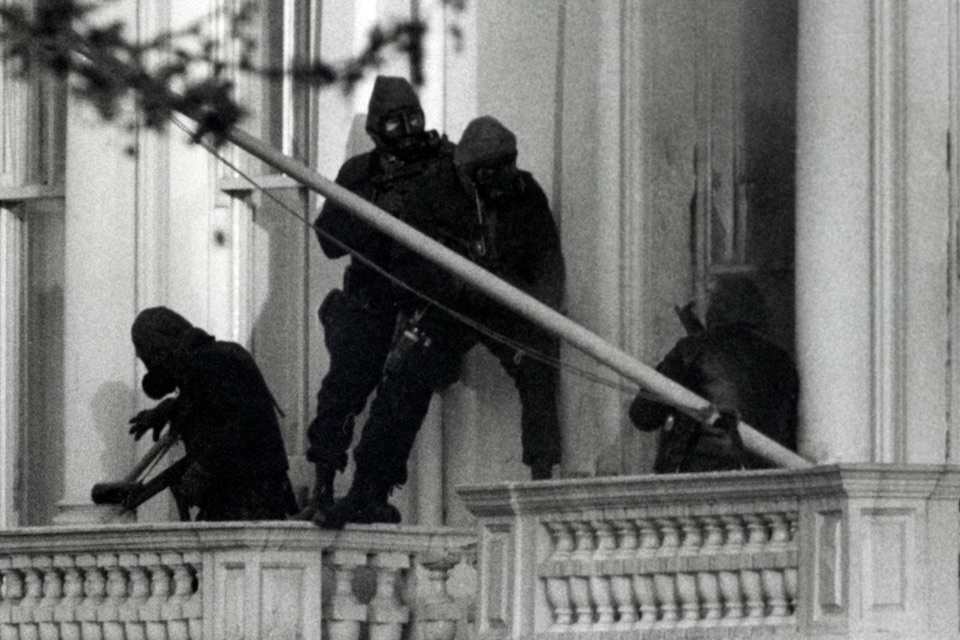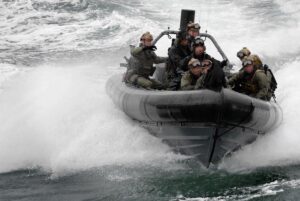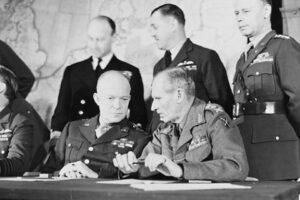
When Rupert Cryer joined the Cabinet Office COVID-19 Task Force, his new colleagues - from the Armed Forces - couldn’t have had more different day jobs. Yet the stark contrast was the very thing that made it work.
I’ve often thought about the SAS Iranian embassy siege of 1980. Six gunmen attacked the embassy in London and took 26 people hostage. Negotiators sought a peaceful release until, on the sixth day, a hostage was executed. Almost immediately, two small SAS teams stormed the building and, in a 17-minute raid, rescued the remaining hostages, killing five of the gunmen and capturing the sixth.

Explosions; smoke; abseiling down the building in front of the world’s media - it sounds like a work of fiction. But this really happened.
For me, an entrepreneur in government keen to channel something of a start-up culture in tackling large, complex problems, the SAS siege poses an interesting challenge. How is it that 30 people can do what 30,000 can’t? And how can we apply some of the Armed Forces’ “get it done” ethos into our everyday work? So when Brigadier Marcus Reedman and some 50 members of the Forces joined the Cabinet Office COVID-19 Task Force, I jumped at the opportunity to work shoulder to shoulder with them.

Working alongside commandos from the Paras and the Marines, a Typhoon fighter pilot, an Apache helicopter pilot and an Arctic warfare specialist, the experience proved invaluable. Here’s what I learnt.
Planning and implementation are inseparable
The best way to get the result you want is to integrate planning and implementation. Military planning focuses relentlessly on The Effect: the thing that the team wants to make happen. Even from the get-go, preparation time is divided between the planning and implementation in the near-immortalised “one third: two thirds” rule.
Planning and implementation teams work closely together, but crucially it’s the “implementers” who are given two thirds of the time to test, challenge and rehearse the plans and come back with any questions. While it’s natural to want just a little more time to perfect the approach, what good is a brilliant idea on paper that doesn’t work in practice?
Planning continues “after the bang”
Military planning doesn’t stop when a perfect plan is published: it stops when the objective has been achieved. In Forces-thinking, “no plan survives contact with the enemy:” that is, you make the best plan you can knowing that lots of factors will derail it and you expect to continue to adapt it as things unfold.

Former General and US President Dwight D Eisenhower went one step further, saying: “Plans are worthless but planning is invaluable.”
While this may sound contradictory, as the Allies’ Supreme Commander in charge of D-Day and the liberation of Europe, he spoke with some authority. Though the plans will doubtless change, the process of planning is a vital way to think through potential problems and opportunities, stress-test the idea and build wider team relationships - all of which makes it easier to adapt as you go, and therefore much more likely to succeed.
 Plan from right to left
Plan from right to left
Arguably the main difference in the default approach between the Civil Service and the Forces is the direction in which they plan. Unlike the public sector where the end-point typically follows the completion of certain necessary steps, the military approach is, “I need to achieve x and I only have y amount of time and resource. How do I do that?” Time matters hugely, and it’s important to use what you’ve got, not what you wish you had.
Orders set direction but aren't set in stone
Contrary to popular belief, orders aren’t followed slavishly. They’re designed to allow autonomy and the application of judgement, within boundaries. With a strong emphasis on the ‘why’ - the purpose - they set out the ‘who’, ‘where,’ ‘when’ and ‘what’. But the ‘how’ is left to the person on the frontline - because they’re best placed to judge how to achieve The Effect with the resources they’ve got.
On occasion, when the way forward was not clear, I heard Forces colleagues say, “Right, I’m going to do x. I can defend that.” In empowered teams, the risk of doing the wrong thing is far outweighed by the risk of not doing the right thing in time.
Mindset matters
“Who dares wins” is not just a famous regimental motto. The sheer willingness to dare - to take on a risk and face it down when others won’t - is a competitive edge that can be the difference between success and failure.
Of course a key reason why a small, elite team excels at what it does is that it’s the right job for the people involved (who may be less effective in a team of 30,000). Much of this is about recognising and using the different skills people bring. It doesn’t mean we need to approach every situation like a paratrooper ready to storm, but mindset matters. It’s about moving from ‘Can we?’ to ‘We can.’

9 comments
Comment by Chris Luck posted on
As someone who has worked in both arenas I can comfortably say it's a good article.
Comment by Jeff Spencer posted on
I like it. The author has picked up on the key positive facets of military operations; though beware of using experience of watching us in procurement as truly watching the military at work: that felt to me and our civil service colleagues like walking through treacle: The military definitely work best at speed. Give us a long project and we will have a new commander and new SMEs posted in; all with new ideas and altered requirements. Give us an urgent challenge and a 10 year project can be achieved in 3 months. Necessity is the mother of invention.
I’d add one piece of force’s law to the authors list - the 80% solution. On some projects it can’t be taken literally, but for most it works. Perfection costs a fortune and takes forever.
Finally, just bringing service personnel into a civil service environment is not enough if civil service leadership are not on side.
Comment by Ray posted on
Great Article. I think the key benefit military planning gives is clarity of objective, decisiveness and not having to ask everyone on the planet their view. In addition you are dealing with trained skilled professionals who will make the right decisions on the ground as the plan is being implemented. Do military get it wrong, of course they do! But they have people who can reflect what is happening and get a quick decision as to the next course of action. This might not be real life in a Governmental department but from my experience the “what” and “how” have already long gone by the time the committee structures have made the decision. Moving to “do” and if need be “adapt” which is what the military have to do in circumstances and is something that for the vast majority of projects in Government need to adopt.
George’s view of the military’s lack of monitoring, evaluation, and learning remain largely alien concepts, is exactly what they do do, otherwise people are at risk
The military approach is an entrepreneurial view, idea, do, review, go again is what is needed
Comment by David posted on
Great article and I totally disagree with the comments of George who in my extensive experience of military planning, is wrong on almost every point he makes. Military planning isn't perfect, nothing is, but it certainly focuses on getting the job done, doing it well, adapting to changes, constant seeking of clarification at all levels and the comment about the bridge being built but in the wrong place is way off the mark. And as for monitoring, evaluation and learning, I think that the military could offer many positive lessons here too (excepting the procurement area!).
Comment by Jimmy posted on
Monitoring and evaluation isn't about getting the job done, it's about having the long term effect. The Army certainly gets the job done, but does it achieve outcomes?
Springing to mind; building a Covid hospital in days was incredible, but it wasn't used. Wars in Afghanistan and Iraq fought courageously; both are now failed states, ISIS has emerged and we now have a domestic Islamist threat. The outcome is about the long-term impact, and the military sometimes misses this in its passion for "getting things done".
I'm not blaming the military, just suggesting that policy and political level, there's a need to think about outcomes when the military is used. And for the military, to constructively challenge what they're told to do using experience and lessons learned.
Comment by O. Harrison posted on
Extremely insightful learnings - the focus on the 'how' is pivotal to inducing an entrepreneurial edge to the CS - decentralised command.
Excellently put together piece, thanks.
Comment by George posted on
Having worked extensively with the military and with government, I would agree they do things differently. Though I would offer a less rosy assessment of the benefits of a military approach to most problems (and would argue that many of the ways of doing things outlined above are, in fact, common to both military and government). In my experience, the military tend be reluctant to seek clarification once instructions have been issued - this leads to nugatory work and a final product that is often unfit for purpose. Iteration is not in the military dictionary. There also tends to be a focus on getting the task done, rather than getting it done well. In other words, it often feels like building the bridge is more important than ensuring it is built in the right place (so, exactly the opposite of the kind of outcome-focused thinking suggested above). Finally, monitoring, evaluation, and learning remain largely alien concepts within the military, meaning that investments are made with no real sense of what value they are generating.
Comment by James A posted on
Completely agree with this, having served seven years before coming to CO. For completely reasonable political/functional reasons, the Army is a delivery organisation and I felt it sometimes focused on actions and outputs rather than outcomes.
There are other differences too (for better or for worse); Army has lots of time to train, central career management, clear doctrine...
Comment by Diana Randall posted on
Great article and some really useful thinking for those of us planning with moving goal posts!